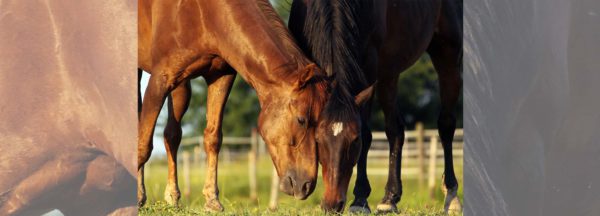Insulin Resistance

By Dr. Tania Cubitt, Ph.D. Equine Nutrition & Reproduction
Standlee Premium Western Forage®
What is it?
Insulin resistance is a condition in which the body’s cells become less sensitive to the insulin that is being produced. Insulin is a hormone that is secreted or produced and released from the pancreas. It is released in response to an increase in glucose levels in the blood following a meal containing sugars or starches. Insulin then stimulates cells in the body to take up this circulating glucose from the blood. Once in the cells, glucose is used for energy or it is converted for storage as glycogen or fat. Horses suffering from insulin resistance show a breakdown of this system.
What are the symptoms?
- Abnormal fat deposits such as a cresty neck or lumpy fat patches, which persist even if the horse loses weight, fatty sheath
- History of laminitis commonly induced by grass
- Puffiness in the hollows above the eyes
- Advanced symptoms include increased thirst and urination, loss of body condition and muscle wasting and low energy levels. Above normal insulin with normal blood glucose.
What are the causes?
The exact cause of insulin resistance is not known. However, several possible causes include:
- Diet – When fed high sugar/starch feeds horses can become insulin resistant
- Obesity – Overweight horses tend to be insulin resistant, as are “easy keepers,” even if they are not obese
- Age – Old horses (>20 years) seem to be more prone to insulin resistance
- Breed – Ponies tend to have higher degrees of insulin resistance than Warmbloods or Standardbreds – breeds that are prone to developing cresty necks and obesity, such as Morgans and some lines of Arabians and Quarter Horses, may be more likely to develop insulin resistance as well
Diagnosis:
The best way to determine if your horse has insulin resistance is by getting your veterinarian to measure resting serum insulin concentrations or the combined glucose insulin test.
Feeding & Management:
Treatment may consist of the following:
- Weight loss through diet and exercise if the animal is obese
- Limiting carbohydrate (sugar/starch) intake through elimination of grain and high-sugar feeds
- Test pastures and hay for amounts of sugars present
- Soaking hay if it is known to contain high amounts of sugars (> 10 to 12% soluble sugars) in hot water for 30 min or cold water for 60 min
- Feeding beet pulp that has no added molasses
- Cut down on free intake of grass if the horse has a history of founder and/or is obese
- Add a ration balancer pellet to supply critical vitamins and minerals
Standlee Premium Western Beet Pulp Pellets are low in carbs and are highly digestible. See if these forage options are right for your favorite four-legged friend by viewing more details at standleeforage.com under products.
